Complete Timeline
Historical points may be relevant to more than one theme as there is always influence, interplay, and overlap between historical events. A complete timeline of all events is included for context. Please explore each theme for full appreciation of how events have influenced our treatment of students with disabilities.
-
BCE
-
Trephination is the oldest known surgical procedure and is documented by archeological evidence that exists from the Neolithic period (8000 BCE to 3000 BCE). In trephination, a hole was bored through the patient’s skull for the treatment of head injuries or to release bad humors and evil spirits from those with mental illness or epilepsy.
Trephination highlights the enduring presumption of a connection between people with disabilities and mental illness, disorders, and evil spirits.
“If all means fail the last remedy is to open the fore part of the Skul with a Trepan, at distance from the sutures, that the evil air may breath out. By this means many desperate Epilepsies have been cured, and it may be safely done if the Chyrurgeon be skilful.”
Riverius, Practice of Physick (1655)

-
In Ancient Greece, children with physical differences were thought to represent displeasure from the gods, and many were left to die on mountains, thrown from cliffs, or drowned.
“The offspring of the inferior, or of the better when chance they to be deformed, will be put away in some mysterious unknown place, as they should be.”
Plato, The Republic: Book V

-
18th Century
-
The families of individuals with mental illness or disability were solely responsible for their care. Families who were unable to provide care had extremely limited options available to them. Often their only recourse was to relinquish their family members to poorhouses or even jails.
-
The major provider of benevolent care outside the family was the church. Beginning in the mid-1700s the Grey Nuns in New France provided care at a hospital founded by Saint Marguerite d’Youville in Montréal.
“Since 1737, The Sisters of Charity of Montréal, “Grey Nuns”, have maintained their mission of love, respect, and compassion for poor and deprived people as it was defined by their Foundress, Saint Marguerite d’Youville.”
"About Us", The Grey Nuns of Montréal
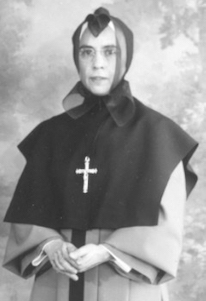
-
19th Century
-
Asylums were built in unpopulated areas far away from any other amenities or services and far away from families. The location of these “places of safety and refuge” made it virtually impossible for families to visit and kept the individuals living there hidden from view.
-
The Victorian era gave rise to both institutions and freak shows in Europe and America. Gathering people with disabilities and abnormalities together to be displayed for viewing in freak shows was in opposition to the institutional practice of hiding people away. Freak shows demonstrated how people with disabilities were portrayed as outsiders and different from the rest of society.
“The exhibition of freaks, monstrosities or marvels of nature were essential components of travelling exhibitions in Europe and America throughout the Victorian period. What was saleable as far as the freak was concerned, of course, physical difference, in a form that was both marketable and palatable.”
University of Sheffield, National Fairground and Circus Archive
Movies Related to Freak Shows
- Freaks (1932)
- The Elephant Man (1980)
- The Greatest Showman (2017)
-
The establishment of Canada as a nation in 1867 resulted in the determination of responsibilities and authorities for both federal and provincial governments. The British North America Act of 1867 established that provincial governments were responsible for health care, education, and social services. As such, ongoing policy issues about the provision of services to people with disabilities are entrenched in the division of powers and responsibility outlined in the Act.

-
The Victoria Lunatic Asylum was British Columbia’s first facility for people with mental illness. The asylum segregated mentally ill people from the general population. The institution closed in 1878 due to overcrowding.
-
British Columbia’s first legislation addressing mental illness was passed. People deemed to be “lunatics” could be committed to an insane asylum with a certificate issued by a team of doctors.
-
Built in New Westminster, the Provincial Lunatic Asylum opened in 1878 to ease the overcrowding issues at the Victoria Lunatic Asylum (open 1872 to 1878). As was general practice at the time, the asylum was located far from any populated areas. The only other building nearby was the B.C. Penitentiary, which also opened in 1878. This practice of separating perceived “undesirables” from the rest of society was strongly supported by the eugenics movement. In 1897, the asylum changed its name to the Provincial Hospital for the Insane. A subsequent name change, to Woodlands School, occurred in 1950.
“Another peculiarity of the wards was “the unusual height of the window sills from the floor, so no one could see out unless he stood on something as high as a table, which was a common way for patients to spend hours. This defect coupled with that of having heavy iron bars for window guards…made the ward[s] very gloomy, and they possessed no decorations, carpets nor curtains…”
T. W. Paterson, British Columbia History Lives Here!
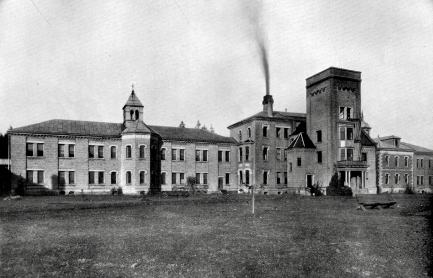
-
The institutionalization movement of the late 1800s coincided with the rise of eugenics. The term eugenics, meaning “well-born”, was coined by Sir Francis Galton in 1883. Eugenicists sought to improve the human species and preserve racial purity through planned human breeding.
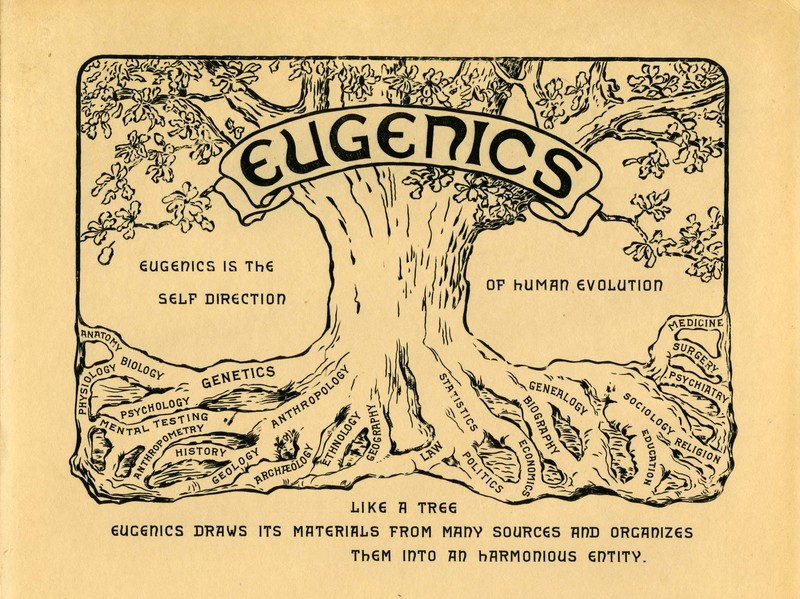
-
In 1890, B.C. enacted legislation for the education of children with disabilities. Deaf children from B.C. could now be sent to the Institution for the Deaf and Dumb in Winnipeg.
From institution to inclusion, a history of special education in B.C. schools
-
20th Century
-
Henry H. Goddard was a psychologist who conducted research on intelligence and mental deficiency at the Vineland Training School for Feeble-Minded Boys and Girls in New Jersey. Goddard used intelligence tests developed by Alfred Binet and Theodore Simon to investigate intellectual disability in children. Binet and Simon categorized intellectual disability in terms of mental age:
- Idiot: someone with a mental age under two years
- Imbecile: someone with a mental age between three and seven years
Goddard coined the term “moron” to refer to an additional category of individuals assessed to have a mental age between eight and 12 years. Goddard believed that morons presented a danger to society due to their inability to mature beyond early adolescence. Goddard believed that individuals with intellectual disabilities should be institutionalized, with men and women in separate institutions. He believed that preventing people with disabilities from reproducing would eliminate intellectual disability and the social problems they presented.
-
In 1912, American psychologist Henry Herbert Goddard published a family study that became highly influential in the eugenics movement. The Kallikak Family: A Study in the Heredity of Feeble-Mindedness tried to show that intellectual disability was an inherited trait. While seriously flawed, the study attempted to establish a genetic link between disability and immorality, criminality, alcoholism, poverty, and prostitution. Goddard proposed segregation in institutions and sterilization to eliminate disability from future generations.
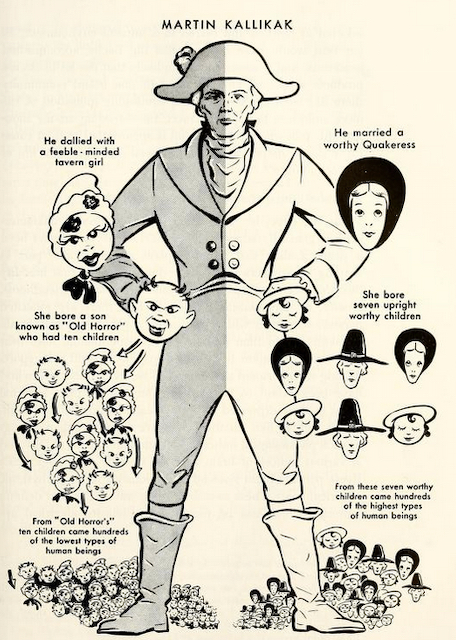
-
In 1909, construction began on a facility to house 300 people with serious mental illness and reduce overcrowding at the Provincial Hospital for the Insane. The new institution first opened in 1904 using temporary housing until construction was completed in 1913. Three hundred and forty people were transferred from the Provincial Asylum for the Insane to the Hospital for the Mind in Coquitlam, already exceeding the capacity for which it was built. Soon after opening, the facility was renamed Essondale. In 1965, its name was changed again, becoming Riverview Hospital.
Riverview Mental Hospital/Essondale
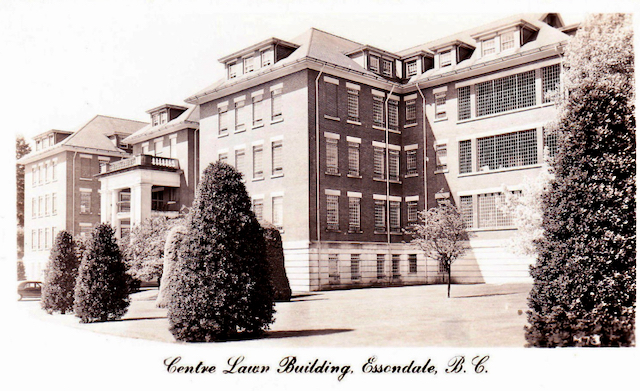
-
Huge numbers of disabled soldiers returned from the First World War. Long-term medical care and vocational training were provided to restore veterans’ independence and ability to work. Programs were developed to address all aspects of rehabilitation, including physiotherapy and vocational training, which looked at disability in terms of function. Programs to assist disabled WWI veterans in their return to work helped develop the concept of rehabilitation and provided the expectation that people with disabilities could be productive participants in society.
The first world war drives rehabilitation toward the modern concepts of disability and participation
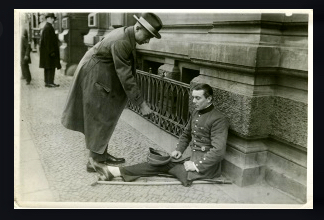
-
On December 6, 1917, two ships collided in the Halifax harbour. One ship was loaded with munitions being shipped to battlefields in WWI. The blast was the largest human-made explosion ever recorded before the atomic bomb. Two thousand people were killed and another 9000 were maimed or blinded. The event was the largest mass blinding in Canadian history and led to the founding of the Canadian National Institute for the Blind (CNIB).
The Halifax Explosion and the CNIB
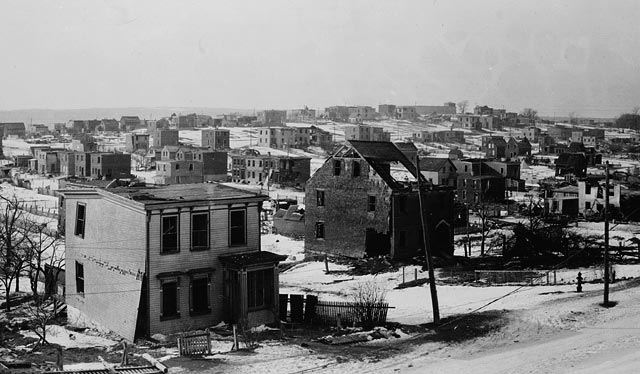
-
In 1924, the B.C. provincial government commissioned J. H. Putnam and G. M. Weir to complete a review of education in the public school system. Their Survey of the School System came out the following year and recommended the creation of “opportunity classes” and special schools for children with disabilities.
-
The eugenics movement had influence in many ways, including the sterilization of people with disabilities. Alberta was one of two provinces to enact sterilization laws, passing the Sexual Sterilization Act in 1928. The Act permitted the sterilization of individuals under the following circumstances:
- They were institutionalized
- They were admitted either under the Mental Diseases Act or the Mental Defectives Act
- They were recommended for release
- Consent was given by the individual
The Act was amended on two occasions: once in 1937 to remove the consent requirement and again in 1942 to include individuals who were not institutionalized.
Eugenics boards were created to manage the approval of sterilizations.
“The board is unanimously of opinion that the patient might safely be discharged if the danger of procreation with its attendant risk of multiplication of the evil by transmission of the disability to progeny were eliminated."
Wilson, R.A. (2018). The Eugenic Mind Project. Cambridge, MA: MIT Press, (p.66).
Eugenic Legislation in Alberta
Claudia Malacrida wrote the book A Special Hell: Institutional Life in Alberta’s Eugenics Years in 2015. Using the testimony of people who lived in the institutions as well as information from archives and former workers, Malacrida provides insight into the “special hell” that institutions were for the people living there and how eugenics guided this inhumane practice.
-
Following Alberta, British Columbia was the only other province to enact a sexual sterilization law. The B.C. Eugenics Board came into effect on July 1, 1933. The duties of the board were, like those in Alberta, to manage the approval of sterilizations.
“If discharged… without being subjected to an operation for sexual sterilization would be likely to beget or bear children who by reason of inheritance would have a tendency to serious mental disease or mental deficiency.”
Sexual Sterilization Act, 1933 (British Columbia)
Eugenic Legislation in British Columbia
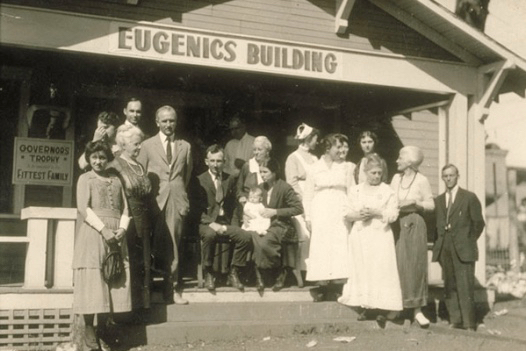
-
“The Universal Declaration of Human Rights (UDHR) is a milestone document in the history of human rights. Drafted by representatives with different legal and cultural backgrounds from all regions of the world, the Declaration was proclaimed by the United Nations General Assembly in Paris on the 10 December 1948 (General Assembly resolution 217 A) as a common standard of achievements for all peoples and all nations. It sets out, for the first time, fundamental human rights to be universally protected and it has been translated into over 500 languages.”
"About Us - UDHR", United Nations
-
Advocacy groups for people with disabilities were formed soon after the UN Declaration of Human Rights, including United Cerebral Palsy (1948), the Muscular Dystrophy Association (1950) and the National Association for Retarded Children (1953).
-
In 1950, the B.C. Provincial Hospital for the Insane was renamed Woodlands School and the emphasis shifted to education. By the late 1950s, there were approximately 1400 people living at Woodlands.
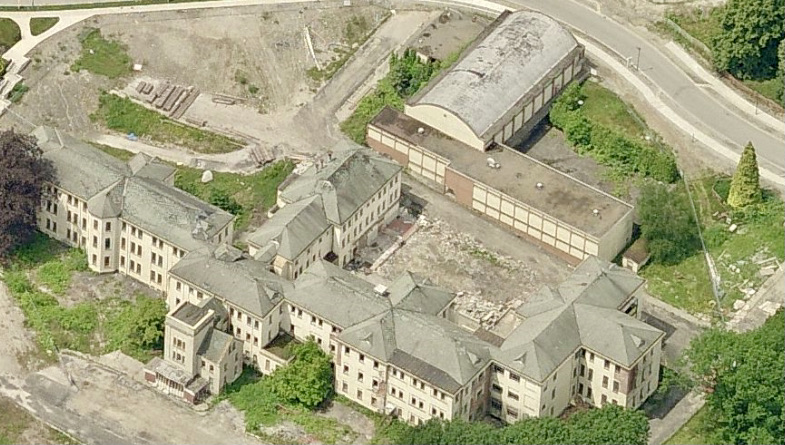
-
Brown vs. the Board of Education of Topeka was a landmark US Supreme Court decision that ruled that racial segregation in schools was unconstitutional. The ruling overturned an 1896 court decision that had determined that segregation was legal as long as the separate facilities were equal. The Brown decision determined that schools for black children were not equal to schools attended by white children and violated the “equal protection” clause of the 14th Amendment. The decision became a cornerstone of the civil rights movement and led to overturning “Jim Crow” laws that discriminated against people of colour.
In the disability rights movement, segregation based on disability was also determined to be unconstitutional and supported the parents’ movement in its quest for public education.
-
In the mid-1950s, what came to be known as the Parents’ Movement began. At the time, the government took no responsibility for educating children with disabilities. Physicians advised families to place children with disabilities in an institution where the child would be cared for, so families could get on with their lives. An increasing number of parents rejected institutional placement and wanted to raise their children at home. Many parents were struggling to find ways to educate their children, who, because of their "mental retardation" label, were entirely excluded from the public school system.
As part of the larger movement of parents advocating for their children with disabilities, several B.C. parent groups came together to form the B.C. Association for Retarded Children (ARC B.C.). Believing that their children were able to learn, the group initially focused on education.
“On May 21, 1954, Dr. Donald Paterson, a consulting pediatrician for the Handicapped Children’s Registry, called a meeting of all persons ‘interested in the advancement of mentally retarded children.’”
"Our History" - Inclusion BC
ARC B.C. went through several name changes, including the B.C. Association for Community Living, and currently Inclusion BC.
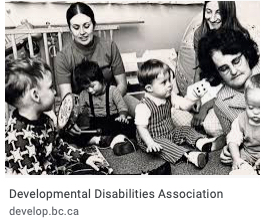
-
In 1955, changes were made to the B.C. Public Schools Act that increased the basic grant allotted to school districts to fund separate classes for children who were moderately “handicapped”.
Provincial Government Funding for Students to attend Public Schools
-
At the Association for Retarded Children of B.C.'s 1956 Annual General Meeting, Dr. W.A. Plenderlaith, representing the Department of Education, told delegates: “Government does not wish to go into the field of education for retarded children and believes it is better to leave the matter in the hands of the organizations who are dealing with it.”
-
In B.C., the University of British Columbia (UBC) became the first post-secondary institution to provide teacher training in special education.
-
Tranquille Institution opened in Kamloops in 1959. Originally a tuberculosis sanatorium that closed the previous year, the institution was reopened specifically for people with developmental disabilities.
The deep, dark and mysterious history of Tranquille Sanatorium and psychiatric institution

-
U.S. president John F. Kennedy’s sister Rosemary was said to have intellectual and behavioural challenges. Kennedy launched the President’s Panel on Mental Retardation in the early 1960s. Senator Robert Kennedy visited several institutions in New York State on whirlwind tours. Afterward, he declared to an oblivious public that:
“In our country, today, human beings are being treated less humanely, with less care, and under more deplorable conditions than animals.”
Senator Robert F. Kennedy
-
In the mid-1960s, Burton Blatt was a researcher in Connecticut investigating institutional care for people with disabilities. Blatt was horrified by the conditions he witnessed in institutional wards. He and photojournalist Fred Kaplan toured several large institutions and took photos with cameras concealed in Kaplan’s belt buckle. The photos were initially published in Look Magazine and raised public awareness about the conditions in these institutions. The photos were subsequently published as a photographic essay entitled Christmas in Purgatory. In the foreword to Christmas in Purgatory, Seymour Sarason writes:
“...the conditions...were not due to evil, incompetent or cruel people but rather to a concept of human potential and an attitude toward innovation which when applied to the mentally defective, result in a self-fulfilling prophesy. That is if one thinks that defective children are almost beyond help, one acts towards them in ways which then confirm one’s assumptions.”
Seymour Sarason, Christmas in Purgatory: A Photographic Essay on Mental Retardation (Foreword)
Christmas in Purgatory: A Photographic Essay on Mental Retardation
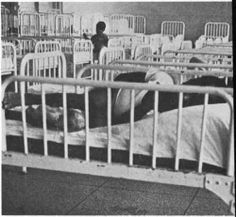
-
Ed Roberts, a man with quadriplegia post-polio, was the first student with significant disabilities to enrol at the University of California at Berkeley. It was the beginning of the Disability Rights Movement. A local paper carried the headline, “Hopeless Cripple Goes to School.” Roberts became an international leader in the Independent Living Movement, fighting for civil rights and opportunities for people with disabilities.
-
In this declaration, the United Nations asserted that persons then labeled as “mentally retarded” have the same rights to health care, education, economic security and protection from abuse and exploitation as any other citizen.
-
“Making available to all people with disabilities patterns of life and conditions of everyday living which are as close as possible to the regular circumstances and ways of life for society.”
Swedish researcher Bengt Nirje, 1969
Wolf Wolfensberger embraced Nirje’s principle in his book Normalization: The principle of normalization in human services. Wolfensberger adapted the definition “utilization of means which are as culturally normative as possible, in order to establish and/or maintain personal behaviours and characteristics which are as culturally normative as possible.” Considering that, at the time, the lives of most people with disabilities were far different from the rest of society, the book represented a paradigm shift in thinking and revolutionized the provision of services to people with developmental disabilities in North America in the 1970s. The book is out of print but is available online.
Normalization: The principle of normalization in human services
-
In 1972, Alberta MLA David King introduced a bill to repeal the provincial sterilization act, saying:
“The act violates fundamental human rights. We are provided with an act, the basis of which is a presumption that society, or at least the government, knows what kind of people can be allowed children and what kind of people cannot. It is our view that this is a reprehensible and intolerable philosophy and program for this province and this government.”
MLA David King
Following Alberta’s lead, B.C. repealed its Sexual Sterilization Act in 1973. It had been in effect for 40 years. The B.C. and Alberta governments have both had lawsuits brought against them for unlawful sterilization.
-
In 1973, at a time when advocacy groups and movements were promoting inclusive efforts in education and community living, Glendale Lodge opened in Victoria, B.C., as an institution for people with severe disabilities.
-
The People First movement began when people with intellectual disabilities from all over North America met to express their desire to move out of institutions and live in the community. People First continues to advocate for inclusion and meaningful participation in the community and to lobby government for supports and services.
-
Conditions at Willowbrook, the largest institution in the United States for people with developmental disabilities, were described by Senator Robert F. Kennedy in 1965 as a “snake pit”. Exposés by Kennedy, and Blatt and Kaplan, were followed by Geraldo Rivera’s 1973 report entitled Willowbrook: The Last Great Disgrace. Scenes from Rivera’s report were aired on WABC-TV and viewed by millions.
Willowbrook, the institution that shocked a nation into changing its laws

-
Public Law 94-142 was ground-breaking American legislation guaranteeing a “free, appropriate, public education” to all children ages three to 21. In addition, the law required that education be provided in the least restrictive environment (LRE), that each student have an Individual Education Plan (IEP), appropriate evaluation, and called for parent involvement and due process.
A History of the Individuals with Disabilities Education Act
-
In the latter part of the 1970s, the concept of integration (with support) began in British Columbia. School districts adopted a “continuum of services” model from most to least restrictive: self-contained schools, self-contained classrooms, resource rooms, general education classrooms. Some districts implemented a policy of “progressive inclusion” to close segregated schools and move students to regular schools. First, students with milder disabilities were moved into separate classes in regular schools. Students with multiple disabilities and complex needs were the last to be moved.
How to Determine the Least Restrictive Environment for Students with Disabilities
-
Mainstreaming in the 1980s placed B.C. students with high incidence designations in regular classes.
-
In the early 1980s, a ministerial order in the regulations of the new B.C. School Act ensured placement for children with disabilities in their neighbourhood school, in a regular classroom. As a result, B.C. began the process of closing segregated schools.
School Act Ministerial Orders – Province of British Columbia
-
The move to close large-scale institutions had its beginnings in the 1970s and gained momentum in the 1980s. The Ministry of Social Services and Housing, and the Ministry of Health’s Services to the Handicapped branch supported moving people out of institutions and into group homes in communities throughout the province. Attempts were made to move people back to their communities of origin to reunite them with family.
"During the 1970s and 80s, as we learned more about the untapped potential of people with developmental disabilities, the push to close large institutions gained momentum. Government services began to focus on providing supports to children, youth, and families in their local communities. This included a much greater effort to develop supports in public schools for students with special needs."
-
The theme of the International Year of Disabled Persons was “full participation and equality.” Other objectives included raising public awareness about disability and encouraging disability groups to lobby for support.
-
The Canadian Charter of Rights and Freedoms became law in 1982. Section 15(1) states:
“Every individual is equal before and under the law and has a right to the equal protection and equal benefit of the law without discrimination based on race, national or ethnic origin, colour, religion, sex, age or mental or physical disability.”
-
“The 324 patients still at the centre were transferred to community care, family homes, or other institutions. According to one article in the BCMHP News, there were 55 patients who were not considered able to return to the general population and were moved to Glendale, which brought about protests from families wanting to keep their loved ones close by.”
Jenna Wheeler, Kamloops News
The deep, dark and mysterious history of Tranquille Sanatorium and psychiatric institution
-
In March 1987, the B.C. government established a Royal Commission on Education that recommended that the rights of students with disabilities and the rights of their families be clarified in the School Act. The School Act was revised in response to the Royal Commission, establishing the right to a full school program, not separated from other students, in their neighbourhood schools for all school-aged students.
-
As a result of the Royal Commission on Education, the B.C. School Act was revised to ensure that all students would have the right to be educated in their neighbourhood schools.
-
Over 300 participants—including 92 governments and 25 international organizations—met in Salamanca, Spain, with the purpose of furthering the objectives of inclusive education. They developed a Framework for Action stipulating that all children should attend their neighbourhood school.
-
Leilani Muir was institutionalized at age 11. When she was 13, she was administered an IQ test and categorized as a moron. After a brief interview with the Eugenics Board, she was selected for sterilization. She was told she was having an appendectomy and did not discover that she had been sterilized until she married and was unable to conceive. Leilani successfully sued the government of Alberta for wrongful sterilization, leading to an apology and compensation for hundreds of other people who had also been wrongfully sterilized.
In 1996, the National Film Board released a documentary called The Sterilization of Leilani Muir. The film chronicles the wrongful sterilization lawsuit filed against the government of Alberta by Muir. It also provides a brief explanation of eugenics, IQ testing and a history of eugenics in Alberta and in Germany.
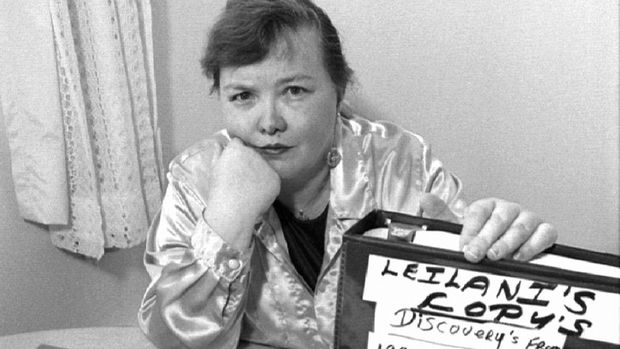
-
A manual was published by the B.C. Ministry of Education with information regarding policies, procedures, and guidelines on special education.
B.C. Ministry of Education – Special Education Services (PDF)
-
In 1996, Glendale Lodge was closed. Most of the residents were moved into group homes in the community. The site later became the Vancouver Island Technology Park.
-
In response to advocacy from families, the B.C. provincial government announced plans to close Woodlands in 1981. Fifteen years later, Woodlands finally closed. British Columbia was the first Canadian province to close large institutions for people with intellectual disabilities.
-
21st Century
-
Following the closure of Woodlands School, an independent review was conducted by B.C. Ombudsman Dulcie McCallum in response to allegations of abuse filed by former residents. The Need to Know report, released in 2002, revealed a culture of systemic abuse and a conspiracy of silence that perpetuated physical, emotional, and sexual abuse. The report recommended an apology and monetary compensation to survivors.
Institutions and People with Intellectual Disabilities
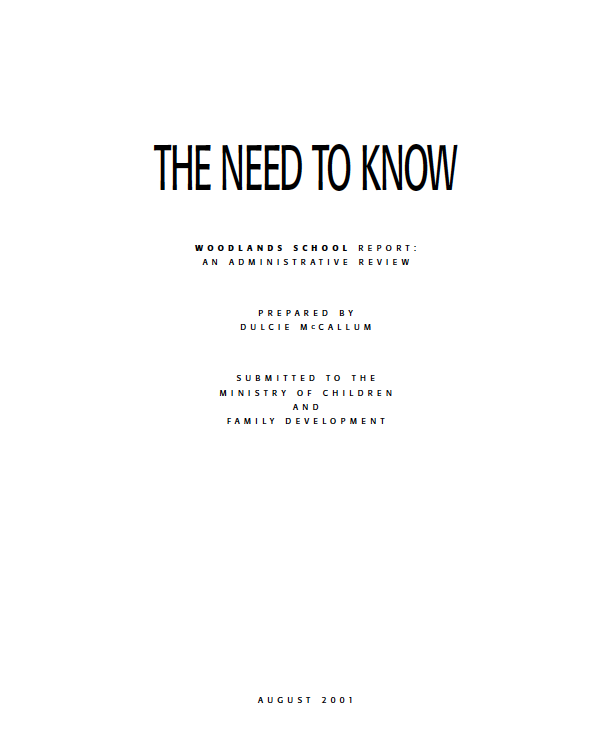
-
In 2001, the World Health Organization (WHO) presented an alternative paradigm to the medical model of disability. In a social model of disability, using the WHO definition, “disability is caused by systemic barriers, negative attitudes and exclusion (purposeful or inadvertent) as the factors that disable people.”
-
B.C.'s Community Living Authority Act was passed, creating Community Living British Columbia. CLBC was initially given the mandate to serve both children and adults with developmental disabilities. Services included residential support, day programs, community inclusion, family supports and respite. By March 2006, 8400 children and 9950 adults are registered for service. In October 2009, changes were made to CLBC’s mandate to refocus the Crown corporation on serving adults over 19. The Ministry of Children and Family Development was given responsibility for services for children and youth with special needs.
-
In 2016, the B.C. Ministry of Education issued a Policy Statement on Inclusion promoting an inclusive education system in which students with special needs are fully participating members of a community of learners.